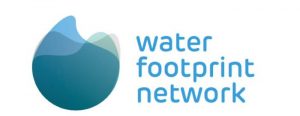Primary Functions
- Find guidance on the strengths and weaknesses of corporate water reporting and how reports can be made more effective and valuable to corporations and stakeholders.
Detailed Description
In “Corporate Reporting on Water: A Review of Eleven Global Industries,” the Pacific Institute evaluates how global companies recognize, address, and report their water-related risks and practices. Using a framework of ten activities for managing water-related business risks, the authors analyzed corporate sustainability and corporate social responsibility reports from 139 of the largest companies in 11 water-intensive industry sectors. This analysis reveals several patterns and gaps in corporate water reporting:
- The vast majority of companies in water-intensive industries now report water information as standard practice. The few companies not reporting in these sectors are the exception, not the norm.
- Lack of context in water reporting undermines the understandability and usefulness of the data provided. Only half the reports have information on company water policies or a description of water-management objectives. Fewer provide industry averages for any of the measures reported, or comparisons among their own facilities.
- Despite some standardization in the field, water measurement methods and definitions remain inconsistent. Companies use various definitions and scoping boundaries to report water use and wastewater information, making comparison and benchmarking difficult. • Information on companies’ water-related risks is not widely reported. Only one in five reporting companies mentions water risks and challenges or describes programs to assess water risks.
- Quantitative water-related targets are not commonly published. Only 30% of the reports provide quantitative targets and even these often do not cover all the indicators reported by the company.
- Supply chain issues are often overlooked. Only 1 in 10 reports mentions supply chain considerations in relation to water management. Not a single company reports on the actual water use or wastewater data of their suppliers.
- Despite regional vulnerabilities, site-specific information is rarely considered or provided. Many companies recognize their water-related risks are location-specific. However, only 18% of the reports include localor facility-level water performance information.
- Water recycling data are not reported. Although many companies mention their focus on water recycling, only 1 in 10 reports include water recycling amounts or rates.
The authors present this report in an effort to understand the strengths and weaknesses of corporate water reporting and to call attention to how reports can be made more effective and valuable to corporations and stakeholders.





